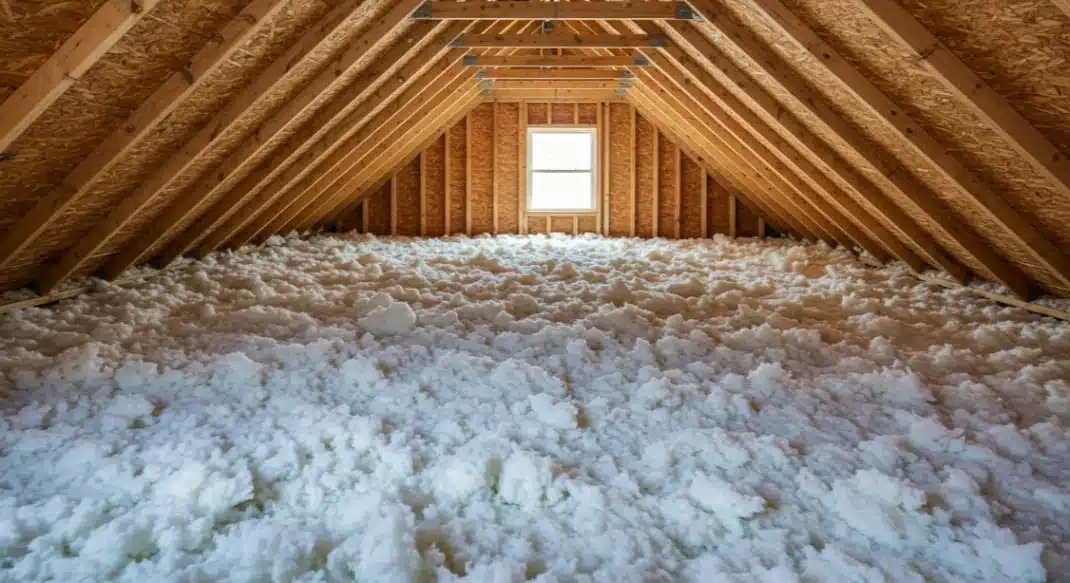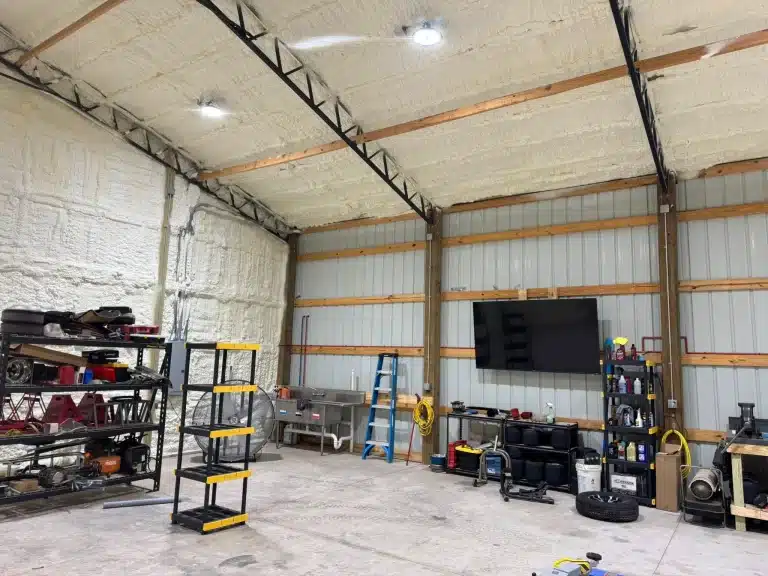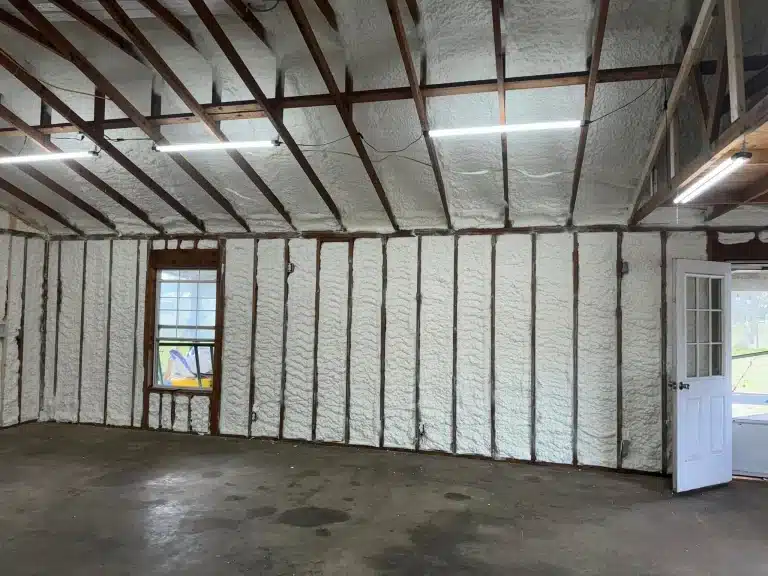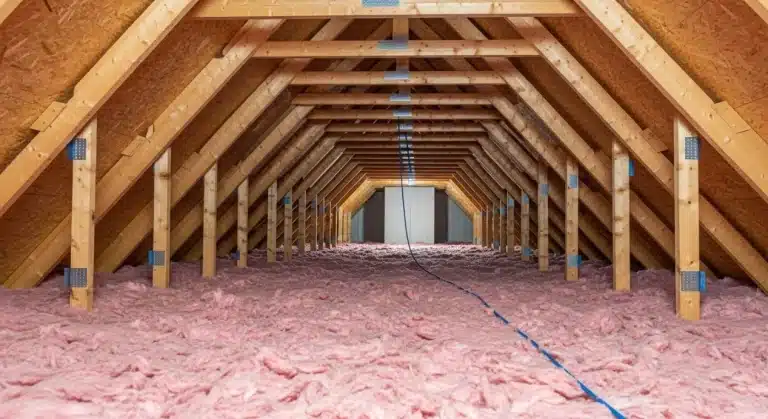Installing blown-in insulation offers more than just energy savings; it fundamentally changes how a home feels. The most immediate improvements homeowners experience are more consistent indoor temperatures, a significant reduction in outside noise, and better indoor air quality. These benefits are followed by improved humidity control, the elimination of drafts, quieter HVAC operation, and even a reduction in the creaks and groans from the house structure itself.
This article provides a detailed look at each of these seven comfort benefits. The information is based on years of professional experience in residential insulation, helping homeowners understand the tangible, day-to-day improvements they can expect. By the end, you’ll have a clear picture of how upgrading your insulation can make your living space more comfortable and serene.
Consistent Indoor Temperatures
One of the first things people notice after installation is the end of “hot spots” and “cold spots.” Blown-in insulation creates a complete thermal blanket, especially in attics and walls. Unlike traditional batt insulation, which can leave small gaps and seams, the blown-in application process allows the material to flow into every nook and cranny. This comprehensive coverage stops thermal bridging, a process where heat moves through the less-insulated parts of a home’s structure, like wood studs.
By creating a uniform layer of resistance, or R-value, the insulation keeps the conditioned air inside your home from escaping and prevents outside temperatures from getting in. The result is a consistent, comfortable temperature from room to room and floor to floor. A report from the U.S. Department of Energy explains that a well-insulated attic can make a huge difference in maintaining stable temperatures throughout the house. This stability means your living room feels just as comfortable as your bedroom, regardless of the weather outside.
Reduced Noise Levels
A quieter home is a more peaceful home. Blown-in insulation, particularly cellulose and dense-pack fiberglass, is excellent at sound dampening. Building science experts at GreenBuildingAdvisor point out that the density of these materials is key to their ability to block airborne sound, making them superior to low-density batts for noise control. The small, fibrous particles of the insulation create a dense barrier that absorbs sound waves, preventing them from traveling through walls and ceilings. Homeowners often report a dramatic decrease in outside noise, such as traffic, lawnmowers, and neighborhood chatter.
This benefit extends to the interior of the home as well. Blown-in insulation in interior walls can significantly reduce sound transfer between rooms, making it a great option for home offices, nurseries, or entertainment rooms. The material’s ability to fill the entire wall cavity leaves no air gaps for sound to easily pass through, creating a much quieter indoor environment.
Improved Indoor Air Quality
You might not immediately connect insulation with the air you breathe, but the link is direct. A significant portion of a home’s air infiltration comes through tiny cracks and gaps in the building envelope, especially in the attic. The U.S. Environmental Protection Agency notes that sealing these air leaks is a key step to preventing outdoor pollutants from entering a home.
Blown-in insulation is exceptionally good at air sealing. As it fills cavities, it blocks the pathways for dust, pollen, and other outdoor allergens to get inside. This can lead to a noticeable improvement in indoor air quality, reducing allergy symptoms and creating a healthier living space for your family.
Bonus Tip: Before installing new insulation, it’s a good practice to have a professional air seal the attic floor. This involves using foam or caulk to close gaps around wiring, plumbing pipes, and light fixtures, which maximizes the air quality benefits of the new insulation.
Optimal Humidity Control
Managing humidity is a constant battle, especially in climates like Florida. Proper insulation helps maintain a more stable humidity level inside the home. During hot, humid summers, a well-insulated attic and walls prevent warm, moist air from infiltrating the building envelope. This reduces the amount of work your air conditioner has to do to dehumidify the air, helping to prevent that sticky, damp feeling.
In the winter, insulation helps keep the interior warm enough to prevent condensation on walls and windows, which can lead to mold and mildew growth. By keeping surface temperatures more consistent, insulation creates an environment where humidity is easier to control, making the home feel more comfortable year-round.
Elimination of Drafts
Drafts are a common comfort complaint, especially in older homes. These drafts often come from small, unseen gaps around windows, electrical outlets, and baseboards. Blown-in insulation excels at stopping these drafts at their source. Its ability to conform to any space means it can seal off the tiny air pathways that other insulation types might miss.
When installed in walls, the insulation provides a complete fill, stopping air movement within the wall cavity. This simple act can make a room feel noticeably warmer and more comfortable, particularly when sitting near exterior walls or windows on a windy day.
Enhanced HVAC Performance and Quieter Operation
When a home is properly insulated, the heating and cooling system doesn’t have to work as hard or run as often to maintain the set temperature. This has two direct impacts on comfort. First, the air conditioner or furnace will run in shorter, less frequent cycles. This avoids the constant blast of air turning on and off, creating a more peaceful background environment.
Second, because the system isn’t straining, it often operates more quietly. The reduction in constant cycling and intense operation means you’re less likely to be disturbed by the sound of your HVAC system kicking on, contributing to a more serene home atmosphere.
A More Stable and Solid-Feeling Structure
This is a subtle but important benefit. Extreme temperature fluctuations can cause building materials like wood, drywall, and plaster to expand and contract. Over time, this movement can lead to creaks, groans, and even minor cracks.
By creating a stable indoor temperature and protecting the home’s structural components from extreme temperature swings, blown-in insulation reduces this expansion and contraction. Many homeowners find that their house feels more “solid” after an insulation upgrade, with fewer of the pops and creaks that are common during sudden temperature changes.
To summarize these improvements, here’s a direct comparison of old and new insulation systems.
Insulation Performance At a Glance
The difference between old, inadequate insulation and a new blown-in system is significant. Here’s a quick comparison of what changes.
| Feature | Old/Poor Insulation (e.g., settled fiberglass batts) | New Blown-In Insulation (Cellulose or Fiberglass) |
|---|---|---|
| Air Sealing | Poor; leaves many gaps and cracks open. | Excellent; fills cavities completely, stopping leaks. |
| Noise Reduction | Minimal; sound travels easily through gaps. | High; dense material absorbs sound waves effectively. |
| R-Value Consistency | Inconsistent; settled areas have very low R-value. | Consistent; provides a uniform thermal blanket. |
| Draft Prevention | Low; does little to stop air movement in walls. | Excellent; eliminates drafts from wall cavities. |
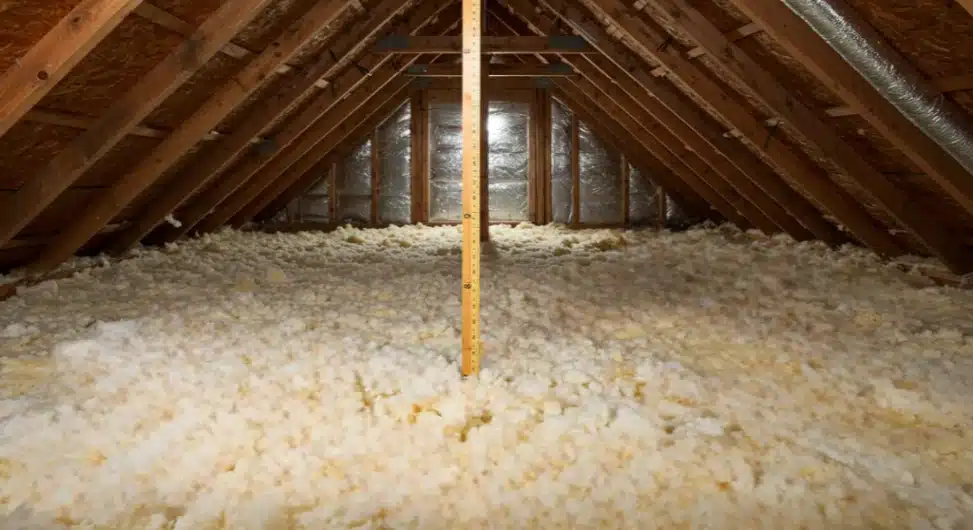
Things to Consider Before Making a Decision
Before you decide to install blown-in insulation, there are a few factors to think about to ensure you get the best results:
- Assess Your Current Insulation: Take a look in your attic. If you can see the top of your ceiling joists, you almost certainly need more insulation. Measure the depth to get a rough idea of your current R-value.
- Choose the Right Material: The two main types of blown-in insulation are cellulose (made from recycled paper) and fiberglass. Cellulose generally has a slightly higher R-value per inch and is excellent for air sealing. Fiberglass is naturally moisture-resistant and non-combustible. The right choice depends on your climate, budget, and specific home needs.
- Prioritize Air Sealing: As highlighted in the bonus tip above, air sealing is a critical first step. Sealing air leaks before adding insulation ensures you get the maximum comfort and energy efficiency benefits.
- Vet Your Contractor: Installation quality matters just as much as the material itself. Look for an experienced contractor who can show you examples of their work and explain their process for ensuring even depth and proper ventilation.
Final Thoughts on Home Comfort
Upgrading to blown-in insulation is one of the most effective ways to improve the overall comfort of your home. The benefits go far beyond just saving on energy bills, creating a living environment that is quieter, healthier, and more stable. From eliminating drafts and hot spots to improving air quality, the change is something you’ll feel every day. Before moving forward, it’s always best to evaluate your home’s specific needs and long-term goals to ensure you make the best investment for your comfort.
Get a Professional Assessment
Understanding your home’s specific insulation needs is the first step toward greater comfort. The team at Prestige Insulation Solutions LLC has the experience to identify areas for improvement and recommend the right solution for your property. For a thorough evaluation and professional advice, you can reach out for a consultation. Contact Prestige Insulation Solutions LLC by phone at (850) 429-4969 or by email at [email protected] to discuss how to make your home a more comfortable place to live.
Sources
- U.S. Department of Energy – Provides information on how insulation and air sealing contribute to a home’s energy efficiency and comfort.
- GreenBuildingAdvisor – An article explaining the principles of soundproofing walls and the effectiveness of dense insulation materials for noise reduction.
- U.S. Environmental Protection Agency – Offers guidance on improving indoor air quality, including the importance of sealing air leaks to prevent pollutants from entering the home.
Answering Your Questions About Blown-In Insulation
What is the R-value of blown-in insulation?
The R-value per inch varies slightly by material. Blown-in fiberglass typically provides an R-value of about 2.2 to 2.7 per inch. Cellulose insulation offers a higher R-value, generally between 3.2 and 3.8 per inch. The total R-value depends on the depth of the insulation installed.
Can you install blown-in insulation over existing insulation?
Yes, in most cases. If your existing attic insulation is in good condition (not wet or moldy), blown-in insulation can be installed directly on top of it to reach the desired R-value. This is a common and effective method for upgrading attic insulation.
Is blown-in insulation a fire hazard?
No. Both cellulose and fiberglass blown-in insulation are treated with fire retardants. Cellulose has a Class 1 fire rating and is very effective at slowing the spread of fire. Fiberglass is naturally non-combustible. Proper installation is key to ensuring fire safety, especially around heat-producing fixtures like recessed lighting.
How long does blown-in insulation last?
Blown-in insulation is very durable and should last for the life of the home. Over many decades, it may settle slightly, but it doesn’t degrade or lose its insulating properties. Both cellulose and fiberglass are resistant to mold and pests.


